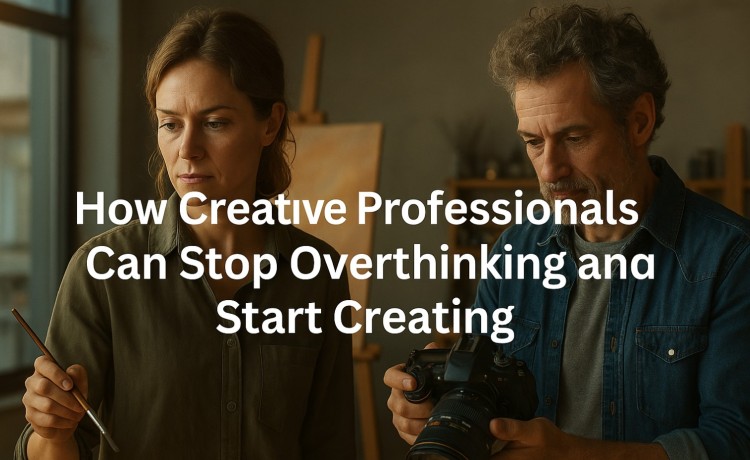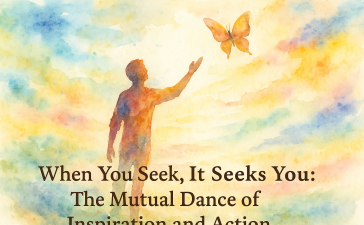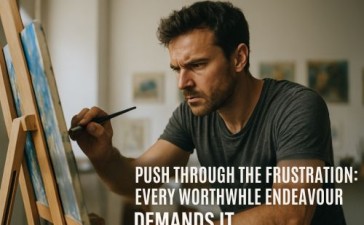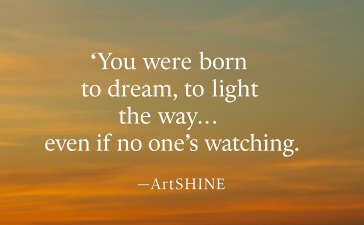If you’ve ever stared at a blank canvas, hovered over the “publish” button, or endlessly reworked a design without ever finishing it—welcome to the club. Overthinking is one of the biggest creativity killers, especially for talented professionals like artists, surface designers, and photographers.
In a world where everything is curated, polished, and posted, the pressure to get it perfect the first time has never been higher. And that’s exactly why many creatives get stuck before they even begin.
But here’s the truth: overthinking isn’t a sign you’re not ready—it’s a sign you care.
And it’s something you can work through.
Why Creative People Are Prone to Overthinking
Creativity is deeply personal. Unlike numbers or spreadsheets, your work represents your voice, your vision, your identity. It’s no surprise that self-doubt and internal criticism creep in quickly.
Common thoughts that plague creatives:
-
“Is this good enough?”
-
“Will anyone like it?”
-
“What if it flops?”
-
“I’m not ready to share this.”
-
“It’s not perfect yet.”
The problem isn’t that you’re thinking—it’s that you’re looping. Overthinking is when thoughts go in circles with no clear action, leading to procrastination, anxiety, and ultimately, creative paralysis.
Case Study #1: Maria, the Surface Designer Who Stayed “Stuck in Sketches”
Maria, a surface designer from UK, had been working on a collection for over a year. Her sketchbooks were full. Her concepts were solid. But when it came to digitizing and finalizing her patterns, she stalled.
“I kept thinking I needed more time, more research, more polish. I was afraid it wasn’t ‘on trend’ enough.”
Through coaching, we applied the Quantum Compass OPIC system to break the cycle.
-
Objective: Finalize and submit a collection to two licensing clients by Q3
-
Planning: Choose 6 of the strongest sketches and map out a 4-week design sprint
-
Implementation: Block 90 minutes daily to digitize, refine, and mockup
-
Commitment: Send first 3 finalized designs regardless of perfection
Result: Maria submitted her collection within 5 weeks, landed a licensing deal within 2 months, and finally felt momentum after being stuck for over a year.
The Real Cost of Overthinking
Overthinking doesn’t just delay progress—it drains creative energy and feeds insecurity. The longer you wait to start (or finish), the louder the self-doubt becomes.
You second-guess your style.
You compare your work.
You shift from creating to consuming—and soon, imposter syndrome takes over.
Here’s what you miss when you overthink:
-
Opportunities to grow and refine your work in real time
-
Chances to connect with your audience
-
Valuable feedback that only comes from showing up
-
The confidence that builds through action
Case Study #2: Andre, the Photographer Who Never Posted
Andre was a commercial photographer with years of experience, but his personal creative projects never saw the light of day.
“I’d edit my photos for hours, only to delete them or bury them in folders. I’d tell myself they weren’t ‘ready’ yet.”
What helped Andre move forward?
-
Realizing that perfection is a moving target
-
Setting boundaries on editing time (no more than 2 rounds per photo set)
-
Publishing one photo every Friday—no matter what
As soon as he committed to regular posting, Andre gained confidence, built an online following, and was later invited to contribute to an independent gallery show.
How to Stop Overthinking and Start Creating: 5 Practical Steps
1. Set Micro Goals
Instead of “finish my collection,” try:
-
Create 1 pattern concept per day
-
Edit 5 photos from the last shoot
-
Write 100 words about your project
Small goals are less intimidating and easier to build into your routine.
2. Timebox Your Creative Sessions
Overthinkers tend to lose hours in indecision. Try setting a timer:
-
45 minutes to sketch or draft
-
15 minutes for editing
-
10 minutes to review and post
This forces decisions and removes the “should I keep going?” loop.
3. Embrace the First Draft Rule
All great work begins as a rough idea. Instead of trying to be brilliant on the first try, aim to get the first messy version out. You can’t refine what doesn’t exist.
4. Share Before You’re Ready
Perfectionism feeds on isolation. When you share your work-in-progress—even with a small, trusted circle—you invite feedback, build confidence, and silence the inner critic.
5. Use the OPIC System to Anchor Your Practice
The OPIC System (Objective, Planning, Implementation, Commitment) helps replace overthinking with action:
-
Objective – What are you really trying to create or achieve?
-
Planning – Break it down into steps or sprints
-
Implementation – Start small, but start
-
Commitment – Set non-negotiables for progress (e.g. post once a week, submit to one client per month)
Case Study #3: Lily, the Artist Who Waited Too Long
Lily was an experienced painter who always dreamed of doing a solo exhibition. For years, she worked on pieces in secret, reworking and repainting over the same canvases.
What changed?
She joined a peer mentoring group and was challenged to book a venue before the work was complete. That single commitment shifted everything.
Within 90 days, she had a curated collection ready and sold 6 out of 12 pieces on opening night.
Her reflection:
“I spent more time overthinking than creating. What I needed was a clear goal and a deadline. That gave me freedom.”
Final Thought: Progress Beats Perfection—Always
You don’t need to have it all figured out. You don’t need a flawless plan. You just need to start.
Creative professionals thrive when they’re in motion.
Overthinking thrives in stillness.
So pick up the brush. Open the file. Take the photo.
Then share it—even if it’s not perfect.
Your audience isn’t waiting for flawless.
They’re waiting for you.
💥 Want to learn more?
Find out more:
👉 Launch Pad + Accelerator Expressions of Interest
👉 Selling and Licensing Your Art & Designs Around the World with ArtSHINE
We’re here to help you take action—just like we’ve helped thousands of entrepreneurs, business owners, and creative professionals around the globe.
✨ Want regular inspiration, mindset tips, and art licensing opportunities sent straight to your inbox?
Sign up for the ArtSHINE Weekly Newsletter and stay connected to a creative community that’s growing, thriving, and shining together.
Now is the time to let your passion SHINE.
Now is the time to Make Tomorrow Today!
To your success,
Vinh Van Lam & Stuart Horrex
Cofounders, ArtSHINE.com





